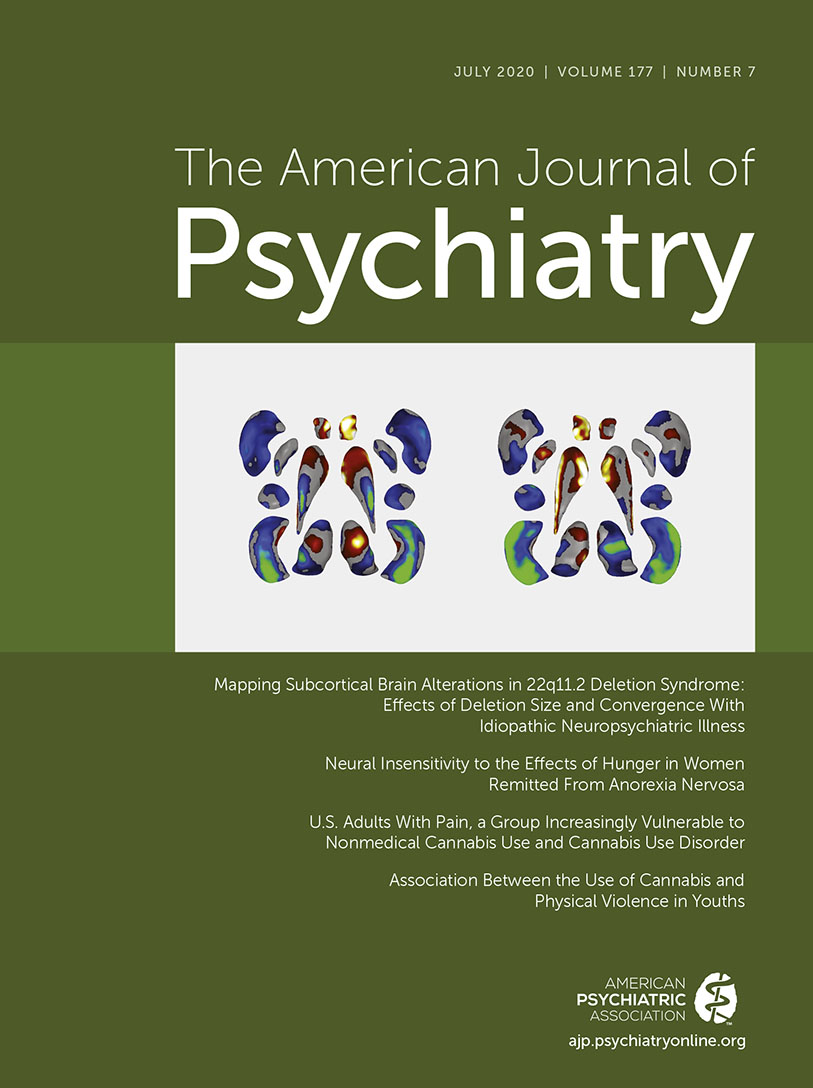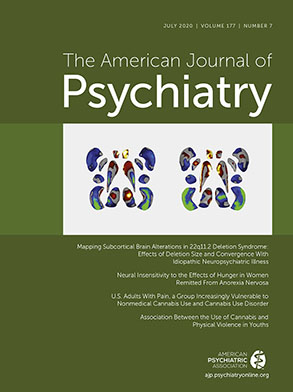T
o the E
ditor: We read with interest the article by Dugré et al. (
1), published in the December 2019 issue of the
Journal. The authors suggest that amygdala activity in response to “neutral” stimuli is increased in patients with schizophrenia compared with healthy subjects, and they recommend investigation of at-risk individuals to differentiate cause from effects. We believe that their claim overstates the case and that their suggestion for further study has already been investigated.
First, we are concerned that the investigation of amygdala response to “neutral” stimuli is unlikely to be a scientifically appropriate approach. It is well known that the human amygdala may respond to stimuli presented as “neutral” because of their novelty, ambiguity, and uncertain nature (
2,
3). Therefore, the concept of a “neutral” stimulus in a constrained, noisy, and unfamiliar environment such as the MRI machine is questionable. This is even more problematic when comparing two populations with very different mental states, particularly when comparing healthy control subjects, who likely include paid volunteers who have been in the MRI machine many times, and patients with schizophrenia, who likely are less exposed to the MRI research environment. We are concerned that the authors’ conclusions oversimplify complex biological and psychological phenomena.
Our second observation pertains to the authors’ recommendations for further study of individuals at risk for psychosis. Although we certainly agree that studying individuals at risk for schizophrenia (i.e., individuals without the confounding factor of the state of illness) is of crucial importance to differentiate cause from effect, it is surprising that the authors failed to mention a substantial contribution to the scientific literature that reported exactly that. Ten years ago, our group published a study in the
Journal whose goal was to disentangle this conundrum. We explored the amygdala response to threatening faces in a relatively large sample of healthy siblings of patients with schizophrenia and compared them with a sample of healthy control subjects. We demonstrated that the abnormal reactivity of the amygdala observed in patients with schizophrenia was not observed in their healthy siblings, suggesting that factors other than genes are implicated in the phenomenon in patients (
4).
Another method to explore whether amygdala response is mediated by risk for schizophrenia and not the state of having the illness is to investigate association with polygenic risk scores (PRSs). Using the results from the second meta-analysis from the Psychiatric Genomics Consortium (
5) for each healthy participant, we generated polygenic risk profile scores for schizophrenia, which are an index of the cumulative genetic risk across the genome, and we explored whether higher PRSs predict greater amygdala reactivity. We have computed multiple schizophrenia PRSs for a sample of healthy control subjects (N=332) using p value thresholds ranging from p<1 (all linkage disequilibrium–independent single-nucleotide polymorphisms [SNPs]) to p<1×10
−8 (genome-wide association study–significant SNPs) and weighted by the logarithm of the odds ratio from results of the second meta-analysis by the Psychiatric Genomics Consortium Schizophrenia Working Group, as described previously (
5). All participants were right-handed, and there were 195 females and 137 males. The mean age of participants was 29.4 years (SD=8.9). Mean participant IQ, as measured by the Wechsler Adult Intelligence Scale, was 109.7 (SD=9.0). Results of the association between PRSs and amygdala reactivity are presented in
Table 1. None of the individuals’ PRSs analyzed were even remotely predictive of individual amygdala reactivity to threatening stimuli. Our new findings confirm our early work in healthy siblings that exaggerated amygdala responsivity is not risk-associated pathophysiology for schizophrenia.
In summary, we recommend caution in interpretation of data obtained from ambiguous experimental conditions and a more careful evaluation of the results in light of the current scientific literature.

